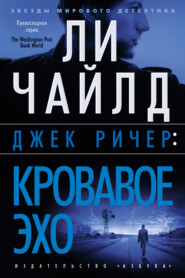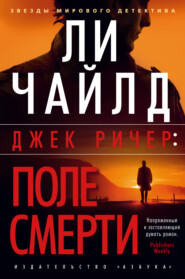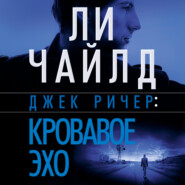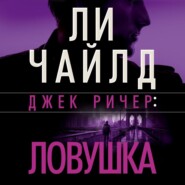По всем вопросам обращайтесь на: info@litportal.ru
(©) 2003-2025.
✖
The Hero
Настройки чтения
Размер шрифта
Высота строк
Поля
All rights reserved under International and Pan-American Copyright Conventions. By payment of the required fees, you have been granted the non-exclusive, non-transferable right to access and read the text of this e-book on-screen. No part of this text may be reproduced, transmitted, down-loaded, decompiled, reverse engineered, or stored in or introduced into any information storage and retrieval system, in any form or by any means, whether electronic or mechanical, now known or hereinafter invented, without the express written permission of HarperCollins.
Source ISBN: 9780008355784
Ebook Edition © November 2019 ISBN: 9780008355791
Version: 2019-11-01
Contents
1 Cover (#u72311db2-a52c-5695-a0a1-e50a90a39b34)
2 About the TLS
3 Also by Lee Child
4 Title Page
5 Copyright
6 Contents (#u7e801b00-cf31-5fa8-955b-b5a4718e4463)
7 The Hero
8 About the Author
9 Enjoyed the book?
10 Also from TLS Books
11 About the Publisher
LandmarksCover (#u72311db2-a52c-5695-a0a1-e50a90a39b34)FrontmatterStart of ContentBackmatter
List of Pagesi (#ulink_c9c8f099-3501-502e-9745-8ebb9614ba5d)ii (#ulink_a0977116-d3b7-5372-93e8-ab3a78cc0792)v (#ulink_988b9837-f751-5af4-9bb6-f64435ec4f32)vi (#ulink_1e02ace2-9ef9-5197-854b-b1ec2ccf0340)vii (#ulink_61c72d3c-c607-5d47-8c4e-12e12f754899)viii (#ulink_ae0f3ec6-0ab7-500a-b8eb-8d3e8c82fb89)1 (#ulink_990652cb-be66-5a6a-a6d4-4248236bba8f)2 (#ulink_3508cdbd-6da4-5d99-9a38-536fef15d632)3 (#ulink_535ace8f-78fd-53ef-ba2e-2280c8050000)4 (#ulink_c8937b0e-eb49-5f46-bf3e-86a3d29a41fc)5 (#ulink_c57eace4-81fd-512f-b6a1-5a43da2072d9)6 (#ulink_c9b9a8a8-8fe6-53ae-9fde-25d1e5c93afd)7 (#ulink_c52bbef2-4d83-5b30-9f90-0ef188edab70)8 (#ulink_7a1ec9b6-131b-5f73-ac34-88feaa172b56)9 (#ulink_78c3c31c-2226-517d-9dc9-5aba31d6fe42)10 (#ulink_78c3c31c-2226-517d-9dc9-5aba31d6fe42)11 (#ulink_9a9ce15f-ddca-5896-aaa9-e1d65529367e)12 (#ulink_1c433fed-8037-5072-bb17-b10db392bbb1)13 (#ulink_28553045-3af2-59c6-97fa-3d2395bb038a)14 (#ulink_28553045-3af2-59c6-97fa-3d2395bb038a)15 (#litres_trial_promo)16 (#litres_trial_promo)17 (#litres_trial_promo)18 (#litres_trial_promo)19 (#litres_trial_promo)20 (#litres_trial_promo)21 (#litres_trial_promo)22 (#litres_trial_promo)23 (#litres_trial_promo)24 (#litres_trial_promo)25 (#litres_trial_promo)26 (#litres_trial_promo)27 (#litres_trial_promo)28 (#litres_trial_promo)31 (#litres_trial_promo)32 (#litres_trial_promo)33 (#litres_trial_promo)34 (#litres_trial_promo)35 (#litres_trial_promo)36 (#litres_trial_promo)37 (#litres_trial_promo)39 (#litres_trial_promo)40 (#litres_trial_promo)41 (#litres_trial_promo)43 (#litres_trial_promo)44 (#litres_trial_promo)45 (#litres_trial_promo)46 (#litres_trial_promo)47 (#litres_trial_promo)48 (#litres_trial_promo)49 (#litres_trial_promo)50 (#litres_trial_promo)53 (#litres_trial_promo)54 (#litres_trial_promo)55 (#litres_trial_promo)56 (#litres_trial_promo)57 (#litres_trial_promo)59 (#litres_trial_promo)60 (#litres_trial_promo)61 (#litres_trial_promo)62 (#litres_trial_promo)63 (#litres_trial_promo)64 (#litres_trial_promo)65 (#litres_trial_promo)66 (#litres_trial_promo)67 (#litres_trial_promo)68 (#litres_trial_promo)69 (#litres_trial_promo)71 (#litres_trial_promo)72 (#litres_trial_promo)73 (#litres_trial_promo)74 (#litres_trial_promo)75 (#litres_trial_promo)76 (#litres_trial_promo)77 (#litres_trial_promo)81 (#litres_trial_promo)
The Hero (#u7e801b00-cf31-5fa8-955b-b5a4718e4463)
Let’s start with opium. That venerable poppy grew wild and natural after the retreat of the last Ice Age, across a broad band of territory stretching from Asia Minor to the Mediterranean to North Africa. We know from the archaeological record that New Stone Age farmers were interested in it. A carefully curated stash of seeds, about seven thousand years old, was discovered near the Mediterranean Sea; seventeen other New Stone Age sites throughout what we now call Europe show evidence of opium use five or six thousand years ago; and the first deliberate cultivation of the poppy, as opposed to its casual collection, seems to have happened in Mesopotamia over five thousand years ago, organized by the local Sumerians, who called their crop hul gil, which translates as ‘the joy plant’.
I would love to know who tried it first. I would love to know who tried anything first. Who first dug up a strange root or random tuber and thought, hey, you know what – maybe I should cook this and eat it? In particular, I would love to know how many died trying. Our species seems to be restless and curious to a degree that seems almost unhinged. Recent research concerning the Neanderthal people shows them to have been pretty much the opposite of what we have long assumed – they were intelligent, bigger-brained, better animals than us, stronger, faster, healthier, more durable, better toolmakers, caring, compassionate, gentle, artistic and organized. But they seem to have been constitutionally timid. Their settlements migrated slowly, cautiously and sensibly. Often a new settlement would be within sight of a previous settlement. In particular travel over water seems never to have been attempted, unless the far shore was clearly visible. By contrast, our own ancestors, Homo sapiens, went anywhere and everywhere, many of them, we assume, to their doom. Not cautious or sensible at all. The consensus – in what I suppose we could call psychological archaeology – seems to be that Homo neanderthalensis was painfully rational, and Homo sapiens was batshit crazy.
Crazy enough, certainly, for one of them to notice the pretty red flower, to scratch its immature seed pod, to watch the sticky latex ooze out, and then to think, hey, you know what – maybe I should collect this stuff and dry it, and then suck it or chew it or smoke it. I would like to meet that person. Certainly his or her inspiration was way more complicated than, for instance, finding a carrot and deciding to try a bite. Restless and curious indeed. (Although smoking is a misnomer – the latex was not itself set on fire, but indirectly heated, and the active ingredients were inhaled as they gassed off. Vaping, five thousand years ago. Nothing new under the sun.) The effect, then as now, was of a deeply warm, hugely satisfying contentment, washing unstoppably over the user, leaving him or her laid out and passive for hours at a time, inert and endlessly contemplative. As a result, the opium poppy’s scientific name is Papaver somniferum, which is Latin for ‘the poppy that carries you to sleep’.
Of course the problem with an extract from a plant growing wild and natural – or even farmed, given good years and bad – was that dosage was fundamentally unpredictable. The sixteenth-century physician Gabriel Fallopius complained bitterly that opium tended to be either too weak or too strong, and if weak it didn’t help, and if strong it was exceedingly dangerous. An overdose caused the victim’s breathing to slow down, and down, and down, until it stopped altogether. Not good. So began a quest to isolate the active ingredients, in order to deliver them in known and reliable doses.
Like most things to do with practical chemistry, not much happened until the nineteenth century, when, between 1804 and 1817, a German pharmacist named Friedrich Sertürner zeroed-in on a particular compound that made up about twelve per cent of the latex by weight. It seemed to be where the action was. The other eighty-eight per cent was window dressing. Sertürner got better at getting the good stuff out, but showed less finesse in his experimental methodology; his indiscriminate test doses nearly killed him and the three young boys he recruited to help. Restless and curious and almost unhinged. But in the end he lived to announce he had successfully isolated the compound, which would henceforth reliably deliver the wave of hugely satisfying contentment, and had the happy side effect of also being the most effective painkiller so far known in human history. Sertürner named his newly naked chemical after the Greek god of dreams. He called it morphine.
Morphine did well in the subsequent decades, especially after the invention of the hypodermic syringe as a delivery system. The American Civil War became a gigantic testing ground for its painkilling abilities. It was great. Wounded soldiers called it ‘God’s Own Medicine’. But it was extremely addictive. Opium itself had long been known to be addictive – a sixteenth-century Venetian visitor observing far-gone Turkish users reported that without their fix they ‘quickly die’. And that was with the eighty-eight per cent window dressing included. Morphine was the real thing, all the time. In America the 1860s ended with millions of addicts. The same was true elsewhere, albeit less spectacular in terms of numbers. So began a new quest, to deliver the wave of contentment, and the painkilling, but without the addiction.
In true British style, the (then presumed) solution was hit upon in 1874 – perhaps by accident – by an English chemist named C. R. Alder Wright, who then quickly abandoned the project, perhaps as uninteresting. The same discovery was then made again, more than twenty years later, and independently, and perhaps also accidentally, by a German chemist named Felix Hoffmann. Hoffmann was trying to synthesize codeine, which is morphine’s baby brother, a chemically similar, but less potent and less addictive substance. Instead his new discovery turned out to be twice as strong as morphine, twice as good at delivering the wave of contentment, and above all not in the least little bit addictive. Or so Hoffmann claimed at the time.
His product swept the world, delivering every bit of the longed-for feeling, deeply warm, hugely satisfying, unstoppable. Twice as fit for purpose as morphine, and way better than opium. It was put in cough syrup for children, and tinctures for anxious women. But the non-addictive part of the deal was a lie. Hoffmann’s product was in fact horrifically addictive. Lives were ruined, people died, crime was rampant. (But corporate fortunes were made.)
What did Hoffmann name his product, that at best left its users laid out and passive for hours at a time, inert and endlessly contemplative, and at worst ruined their lives and killed them? He called it heroin, from the German for heroic.
Why that word?
The best linguist I know is my daughter Ruth. Her main enthusiasm is the deep structure of language, but she runs a lively sideline in English etymology, fascinated by the origins of words, their drifting meanings and the way in which their choice and usage subtly influence the mood and temper of the clauses in which they appear. Once we were driven from New York to Philadelphia – me for a book event at the Free Library, she hitching a ride to visit old college friends – and we talked the whole two hours about the use of a gerund on an advertising billboard we saw. Did the gerund somehow offer openness, warmth, inclusion, invitation? Mostly she talked, and I listened. Very rarely do I know something she doesn’t. My only score in recent years was the origin of the English word ‘rival’ – but I had an unfair advantage: I have a law degree, and studied the history of English common law, and knew that the long-ago ground-zero issue for all kinds of torts and liabilities was bodies of water, in terms of upstream depletion and downstream flooding and so on. Hence rival, from the Latin rivalis, one who competes over a river.
But for all her personal rules and grammar-based rigour about structure, Ruth is very permissive in terms of the prescriptive-descriptive linguistic debate. She’s happy for words to change their meanings. Grammatical conventions, too. She feels language is what its users need it to be. She won’t exclude people for a lack of facility or fluency. Not like the ancient Greeks, who had utter contempt for those who couldn’t speak their language. ‘Barbarian’ is a Greek word, meaning a savage – not necessarily a violent, rampaging or physical savage, but one whose savagery consisted solely in not being able to speak Greek. To the Greeks, all that such people could manage was baa-baa-baa, like sheep. Hence ba-ba-rian. Ruth is not like that.
I’m somewhere between the two poles. I think words must have commonly agreed meanings, otherwise all we can ever say to each other is baa-baa-baa. If someone arranges to meet me at the baseball stadium, I’ll show up there, not the ice hockey arena. If someone asks for a cigarette, I’ll give them one, not a pen or a key or a handkerchief. And so on, and so forth. Words should be more like knives than pillows. Which is not to say they should never change. I’m perfectly happy with the migration of a word like rival. No doubt its modern meaning was first introduced as a metaphor. Or more likely, the very first time out, as a simile: You two are competing like … like … rivals! It’s a good simile and therefore a good subsequent migration, preserving as it does the core emotional truth of the original, before transferring it to a new context.
I’m also happy with adoptions, like, say, addict (since we’ve mentioned many millions of them) – from the Latin addictus, which meant a debtor awarded as a slave to his creditor. That kind of thing didn’t happen any more, but when a new word was needed (not long after Sertürner first isolated morphine, unsurprisingly), addict was an astute choice, with the shame of indebtedness suggesting the shame of submission to a dependency, both blended with the strong, almost literal, slavery metaphor. I’m content that over many centuries ‘nice’ moved from disapproval to approbation, and that over the same span ‘bully’ moved in the other direction. I can deal with stuff invented five minutes ago. When I was a kid, ‘sick’ was what you pretended to be to get a day off work. Now it’s the best thing ever. Soon it won’t be. Soon it will be forgotten, like the groovy words we used, back in the day. All good.
Except that, it must be said, occasionally common sense yields to pedantry. My personal irritant is ‘dilapidated’. Right there in the middle of the word is the Latin lapis, which means stone. A dilapidated building is one from which stones have been removed or taken out, possibly stolen, possibly to be reused or repurposed. Hence a wooden hut cannot be dilapidated. A brick house cannot be dilapidated. They were never lapidated to start with. Hence frequent irritation. Such are the perils of a classical education. Education is different now, but it wasn’t all that different before my time, not for a couple of centuries. Any well-educated person anywhere in Europe would have had a solid grounding in the classics. Certainly the coiner of addict did. Is it an exaggeration to say that Latin and Greek were known quantities in households with more books than a lone family bible? Probably, but if a member of such a household completed any kind of undergraduate or postgraduate work, there would have been significant accumulated exposure to the classical languages, and the cultures they represented, and their stories, their myths and their legends. Obviously old Gabriel Fallopius knew all that stuff. Certainly Friedrich Sertürner knew all about the Greek god of dreams. (And was probably ready to argue for forty-five minutes why it was indeed dreams
Вы ознакомились с фрагментом книги.
Приобретайте полный текст книги у нашего партнера:
Приобретайте полный текст книги у нашего партнера:

















